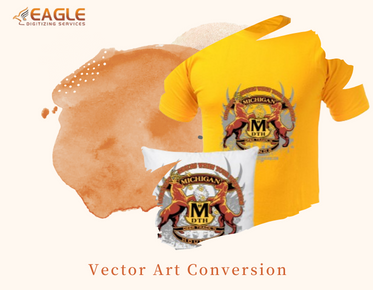Understanding Vector Artwork and Its Mechanisms
The digital art landscape has transformed immensely, with vector artwork becoming a cornerstone in the industry. It's more than just a style; it's a revolutionary approach to creating scalable, high-quality images. But what exactly is vector artwork, and how does it function to yield such superior outputs?
What is Vector Artwork?
Vector artwork is a form of digital illustration that uses mathematical equations and geometric primitives like points, lines, and polygons to represent images. Unlike raster graphics, which are made up of fixed pixels, vector graphics are rooted in mathematical expressions, allowing them to be scaled infinitely without losing quality. This makes vector artwork particularly suitable for design fields where resizing and clarity are crucial, such as logos, typography, and print graphics.
How Does Vector Artwork Work?
The process of creating vector artwork involves using software tools to draw shapes and lines based on mathematical equations. These shapes can be scaled and manipulated without degradation in quality, providing flexibility and adaptability across different media and resolutions. Tools like Adobe Illustrator and CorelDRAW are commonly used to create these designs, offering a range of functions like bezier curves, gradients, and anchor points to shape expressive and dynamic vectors.
One fundamental aspect of vector artwork is that it remains clean and crisp regardless of how much you zoom in or out. This is because the graphics are not stored as a grid of pixels; instead, they're defined by parameters such as start point, endpoint, curvature, angle, etc., which the software renders dynamically based on the display size.
The Advantages of Vector Art
Vectors are preferred over raster graphics for several reasons. Primarily, their scalability means that a single vector file can be used across various formats and sizes without multiple versions. This efficiency not only saves time but also ensures brand consistency. Moreover, vector files tend to be smaller than raster files, as they carry mathematical data instead of detailed photographic information.
Additionally, the versatility of vector graphics allows artists to be incredibly precise with their work. This precision makes vectors ideal for professional designs, such as architectural plans or detailed illustrations.
At Eagle Digitizing, harnessing the power of vector art forms the bedrock of our services. Our expertise spans raster to vector company conversions, providing unparalleled clarity and professionalism in the designs we offer.
Applications of Vector Artwork
Vector artwork is integral to several industries. In the realm of print media, it ensures that designs appear clear and defined, regardless of the print size. It is also essential in web design, where high-resolution displays can benefit from the scalability of vectors. In logo design, vectors enable brands to maintain the integrity of their logo across billboards, merchandise, and digital media without any pixelation or blurring.
The significant role of vector conversion services becomes apparent here - by allowing existing raster images or other formats to be converted into vector format, they make these designs versatile and adaptive to countless applications.
Future Trends in Vector Art
As technology continues to evolve, vector graphics are seeing enhancements through artificial intelligence and machine learning. These advancements are simplifying the vectorization process, making it more accessible and efficient than ever before. Predictably, this will broaden the scope of vector graphics in animation and interactive media, further strengthening their position in creative industries.
For designers and businesses looking to stay ahead, understanding and leveraging online vector conversion techniques will be imperative. Ensuring content remains fresh and adaptable to emerging platforms will require a dedication to innovation and excellence in vector art.
Exploring Vector Artwork Beyond the Current Paradigm
While the current capabilities of vector graphics are exceptional, one cannot ignore the potential for augmented reality (AR) and virtual reality (VR) applications. As these technologies become more ingrained in daily experiences, the adaptability and clarity of vector artwork will play a critical role in developing immersive environments.
As designers and users, the key is to not only utilize vector graphics for what they can currently offer but to think creatively about their potential applications in future digital landscapes. Considering these possibilities, one might ask themselves: how can the versatility of vector artwork redefine the boundaries of digital art and user experience in the years to come?



